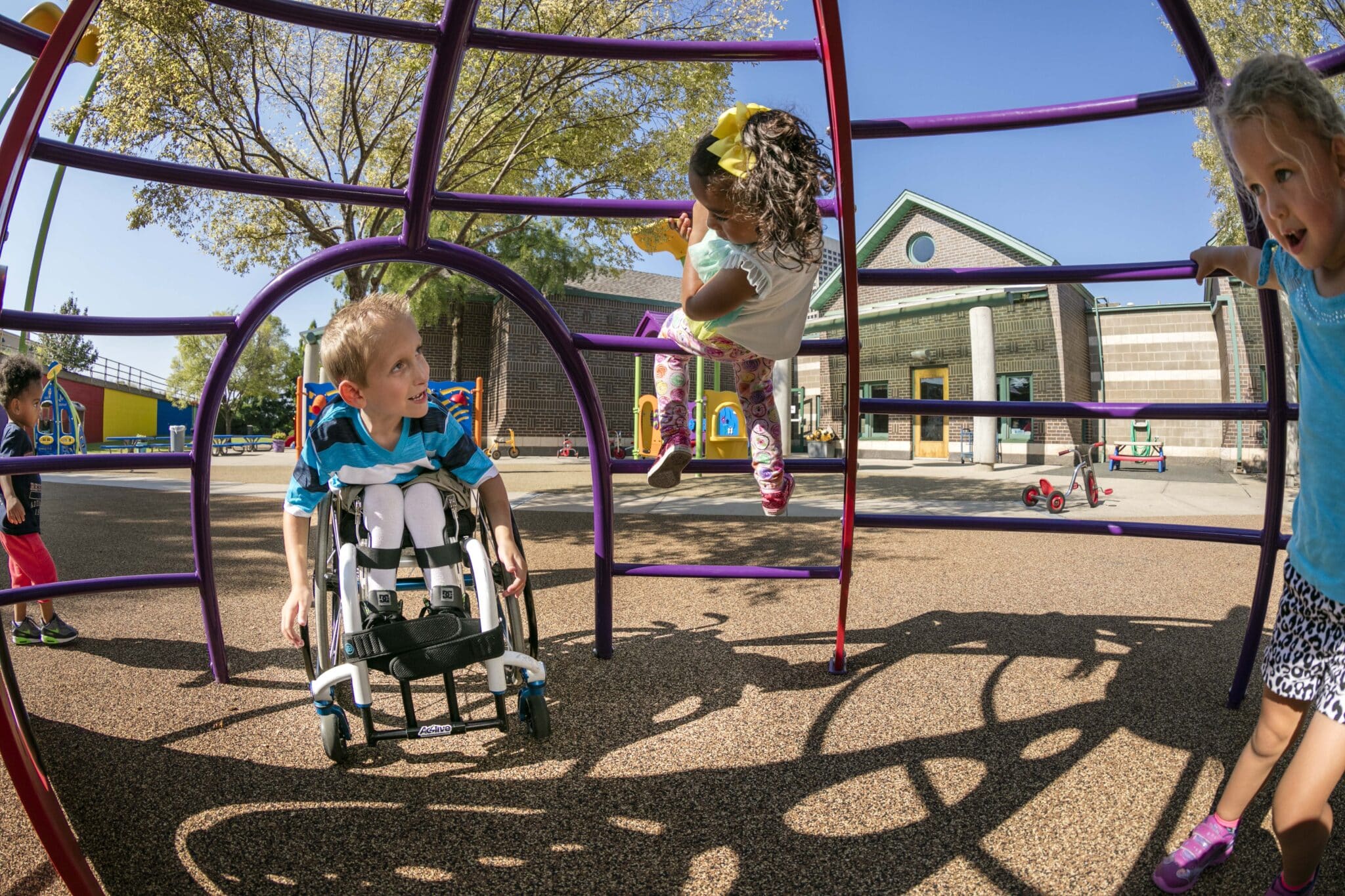Play is an integral part of children’s growth and development, and we believe children of all abilities should have the opportunity to access engaging playgrounds. Inclusive playgrounds bring community members together by creating a safe and welcoming space where parents, caregivers, and children have fun and enjoy the benefits of play.

Accessible vs Inclusive
The Americans with Disabilities Act provides requirements for accessible playgrounds. Playgrounds that meet these standards include pathways, safety surfacing, and other elements that mainly target physical or wheelchair accessibility. While playground accessibility is an important step, our goal with inclusive playgrounds is to go beyond accessibility requirements to create a fun and inviting environment for children and adults with a range of abilities and interests. For example, playground design that considers people with visual or hearing impairments or cognitive and developmental differences can go beyond only physical accessibility. We want to create play spaces for people with different mobility, emotional, neurological, and intellectual needs. Inclusive design is the best way to ensure play is available for all.
Benefits of Inclusive Playgrounds
Inclusive playgrounds provide many of benefits for children of all ages and abilities, parents, and caregivers. They provide children with a place to socialize and learn important skills such as conflict resolution, communication, and teamwork. Inclusive playground equipment encourages children of different ability levels to collaborate and engage in group play. Inclusive playgrounds also bring families and community members together, promoting diversity and creating a welcoming space where people can spend quality time outdoors.
Inclusive Play Equipment
We offer various types of playground equipment that help create a more inclusive environment for all.
Multi-sensory play equipment is engaging for children of all abilities. Play elements that include visual, auditory, or tactile elements are beneficial for encouraging sensory development and can be placed along paths making them accessible to reach. Children who prefer quieter or independent play can also enjoy sensory equipment such as activity panels.
The AeroGlider encourages cooperation and teamwork of children of all ages and abilities. It includes spaces for children to sit and stand, enough room for two wheelchair users to sit, and rails for adults or kids to help their friends glide.

The Unity RockR and Unity SpinR allow multiple people to sit, lay, stand, or climb to rock or spin with friends.


You can download the Inclusive Play Design Guide for detailed information on planning, layout, access, equipment selection, and more.
Everyone deserves the opportunity to connect, grow, and have fun through play. Inclusive playgrounds are welcoming and enjoyable spaces for all, and we are here to help create these spaces in your community.






